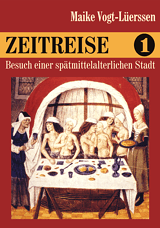Sie konnte ihrem Mann nie vergeben, dass er ihr nach alter Tradition im schottischen Königreich ihre ersten fünf Kinder, Henry Frederik (1594-1612), Elisabeth (1596-1662), Margarete (1598-1600), Karl (1600-1649) und Robert (geboren im Januar 1602 und gestorben im April 1602), entzog und jene hohen adligen Herren und deren Familien zur Aufzucht und Erziehung übergab. Ihre Tochter Elisabeth verbrachte somit z. B. ihre ersten sieben Jahre in der Obhut von Alexander, dem siebten Lord Livingstone, und seiner Gattin Helen (oder Helenor) Hay. Daher lebte Anna von Dänemark seit der Geburt ihres ersten Kindes von ihrem Gatten getrennt, mit gelegentlichen gemeinsamen Abenden im Bett. Erst als sie sich im Jahr 1603 von Schottland nach England begab, erhielt sie dort das Recht, ihre Kinder, die sie bisher nur selten gesehen hatte, häufiger besuchen zu dürfen. Ihr sechstes Kind Maria (1605-1608) und ihr siebtes Kind Sophia (geboren und gestorben im Jahr 1606), die sie zum ersten Mal als kleine Kinder erleben durfte, starben jedoch bereits sehr jung. Anna, die ihre Kinder über alles liebte, litt in ihrem Leben durch diese traurigen Ereignisse sehr an Depression.
Im März 1603, als die Königin Elisabeth I. von England gestorben war und sich Jakob VI. von Schottland als ihr Erbe in sein neues Königreich begeben wollte, ereignete sich Folgendes: "When James bade farewell to the Queen [Anna von Dänemark], who at the time was several months advanced in pregnancy, he made arrangements for her to follow him in twenty days, if his reception in England was favourable … Their son Henry [Frederik], newly excited her scarcely controllable feelings of maternity by an affectionate letter, congratulating her on the accession of his father to the English throne, lamenting the absence of both his parents; and expressing a hope, that as the King was too far off, the Queen, his mother, would pay him a visit. When Anne received this letter, James had ordered the man she hated above all others, the upright Earl of Marr, to England; and the moment he had departed she mustered a strong party of the nobles of her faction, hastened to Stirling Castle, and endeavoured to intimidate the old Countess of Marr into the surrender of the Prince. The Countess admitted the Queen into the castle, but courageously refused entrance to her armed attendants; and when Anne made preparations to take her son away with her, the Countess declared, that she had the King’s warrant for his detention, and that nothing short of an equal authority should induce her to surrender him. A stormy scene ensued, force was threatened; and in the end the Queen was carried to bed in hysterics, and shortly afterwards gave premature birth to a dead son. When King James received intelligence of this unpleasant event … he instantly dispatched Lord Lennox to meet the Earl of Marr, who was on his road to London, and to deliver to him two royal orders; one being a command for him to hasten in the company of Lennox to Stirling, and endeavour to appease the Queen; and the other, a letter to Marr to give to the Queen, authorizing her to receive charge of Prince Henry, and conduct him to Holyrood." Letztendlich betrat Anna von Dänemark mit ihren beiden älteren Kindern Henry Frederik und Elisabeth das neue englische Königreich. "… but the 'babie Prince Charles' being young and delicate, was left at Dunfermline under the guardianship of Lord Fife." (in: Francis Lancelott: The Queens of England and their Times, Volume II, id., pp. 660-661).
















